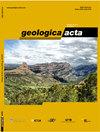Late Quaternary subsidence records from the Datça graben and Cnidus ancient city (SW Turkey): sea-level changes versus tectonics
IF 2
4区 地球科学
Q2 GEOLOGY
引用次数: 0
Abstract
The Datca graben in southwestern Anatolia is a WNW-trending seismically active depression, with tectonic activity since Pliocene time. This tectonic activity is controlled by normal faults, which have effected ancient settlements. The Cnidus city (old and modern) –an ancient mercantile centre during the Hellenistic, Roman and Byzantine periods– is one of the places that has recorded this activity. The ancient harbour walls of Cnidus, lying 2.2-4.0m below sea level, contain important traces about sea-level changes and tectonics over the past 2.6kyr. Palaeostress analysis along boundary faults in the Datca graben yields an almost N–S oriented pure tensional regime, compatible with earthquake focal mechanism solutions located around the Datca Peninsula. Additionally, an almost E−W trending surface rupture related to a historical earthquake in modern Cnidus, which shows normal fault characteristics, gives further support to the ongoing extension along the Kizlan, Karakoy and Cnidus fault zones. Previous studies on late Quaternary sea-level changes around the Datca Peninsula suggest that 2.6kyr ago sea level was 1.0-1.25m lower than today. From the present-day depth of the Old Cnidus harbour remains and regional sea-level records, it can be inferred that tectonics has played a significant role. Our calculations show that the Datca graben is subsiding at rates of 0.36-0.46mm/yr in the central part and 1.05-1.15mm/yr in the southern part. These values match those found in other areas around the Datca Peninsula.土耳其西南部datalada地堑和Cnidus古城晚第四纪沉降记录:海平面变化与构造
安纳托利亚西南部的Datca地堑是一个WNW走向的地震活动凹陷,自上新世以来就有构造活动。这种构造活动受到正断层的控制,正断层影响了古代的定居点。Cnidus城(古老和现代)是希腊化、罗马和拜占庭时期的古代商业中心,也是记录这一活动的地方之一。Cnidus的古港壁位于海平面以下2.2-4.0米处,包含了过去2.6公里海平面变化和构造的重要痕迹。沿着Datca地堑边界断层的古应力分析产生了几乎南北向的纯张性状态,与Datca半岛周围的地震震源机制解决方案相兼容。此外,与现代Cnidus的历史地震有关的几乎呈E-W走向的地表破裂,显示出正常的断层特征,为沿着Kizlan、Karakoy和Cnidus断层带的持续延伸提供了进一步的支持。先前对达特卡半岛晚第四纪海平面变化的研究表明,2.6公里前的海平面比今天低1.0-1.25米。从老Cnidus港遗迹的现今深度和区域海平面记录可以推断,构造运动发挥了重要作用。我们的计算表明,Datca地堑在中部以0.36-0.46mm/yr的速度沉降,在南部以1.05-1.15mm/yr的速率沉降。这些值与Datca半岛周围其他地区的值相匹配。
本文章由计算机程序翻译,如有差异,请以英文原文为准。
求助全文
约1分钟内获得全文
求助全文
来源期刊

Geologica Acta
地学-地质学
CiteScore
2.50
自引率
6.70%
发文量
13
审稿时长
>12 weeks
期刊介绍:
- Relevant conceptual developments in any area of the Earth Sciences.
- Studies presenting regional synthesis.
- Thematic issues or monographic volumes presenting the results from one or more research groups.
- Short papers reflecting interesting results or works in progress.
- Contributions and results from Research Projects, Workshops, Symposiums, Congresses and any relevant scientific activity related to Earth Sciences.
- Geologica Acta aims to stimulate rapid diffusion of results and efficient exchange of ideas between the widespread communities of Earth Science researchers (with special emphasis on Latinamerica, the Caribbean, Europe, the Mediterranean
 求助内容:
求助内容: 应助结果提醒方式:
应助结果提醒方式:


